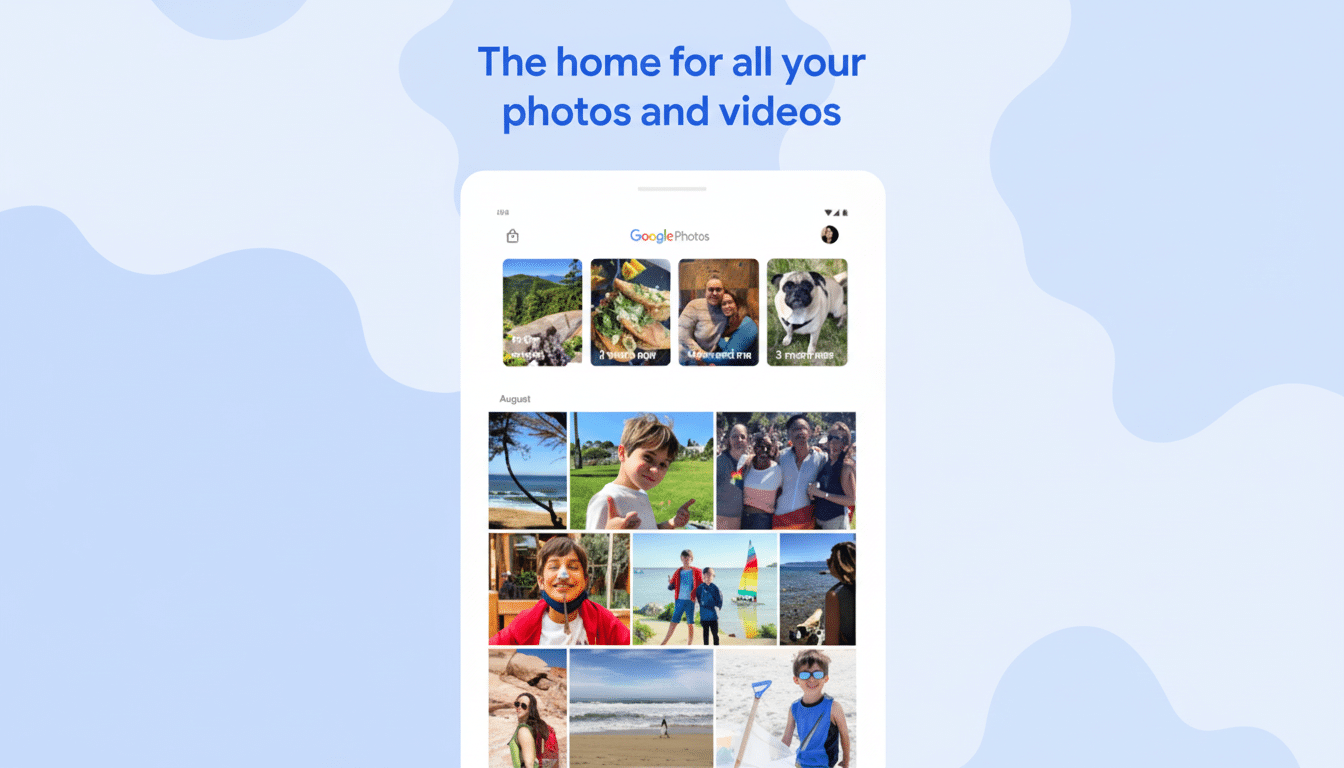Google Photos is now smarter when it comes to saving bad shots. With Nano Banana in the built-in editor, the app can now open closed eyes, fix motion blur and remove soft details with less hassle — and fewer retakes. The update also introduces new AI templates and more intelligent, context-sensitive tools that should make edits feel faster and more personal.
What Nano Banana Brings To Google Photos’ Editor
Nano Banana is Google’s newest generative model added into Photos. It can do more than slap on filters and over-sharpen an image; it can actually synthesize missing visual detail, resolving it to better match the rest of the shot. In practical terms, it translates to having fewer artifact-laden edits every time you try to salvage a blink, muffle some unpleasant noise or stabilize a shaky hand.

Choose a photo, tap Help Me Edit and let the app know what you want fixed. You can ask for plain corrections — “open my eyes,” “reduce motion blur,” “sharpen the face” — or you can go all in with creative restyling. Under the hood, Nano Banana deconstructs facial structure, lighting and texture to recompute what the scene probably should look like before blending synthetic pixels into the original image.
Sharper Eyes And Cleaner Shots Across Albums
Fixing blinks and blurs is not new to Google’s imaging stack. Photo Unblur, Face Unblur and Best Take on the latest Pixels give it a head start by aligning frames, reducing noise and swapping in open eyes from burst shots. The change now is one of scale and ease: the Photos editor can make comparable repairs to way more photos, all on many devices, without requiring a perfect multi-frame burst taken by a flagship phone.
Even accuracy gains come from private face groups. If you’ve activated face grouping, Photos may refer to your old pictures to better re-create details — say, the shape of your eyes behind sunglasses or the way your lashes capture light — so a blinking eye looks like you and not some stock model. These references are kept private to your account, Google says, and those edits stay local to your library until you share them.
Real-world example: A child’s birthday photo in which half of the guests are mid-blink and motion blur is everywhere because you took the picture with insufficient light.
You used to maybe save one or two faces, but with Nano Banana, you can actually lift eyes across the scene, take away streaking in quickly moving hands and bring back texture in frosting and fabric without that plastic look that heavy sharpening creates.

New AI Templates And Ask Button In Google Photos
In the US and India, to cut down on trial and error, Photos is launching a new kind of AI template. Prompts like “make a professional headshot” and “put me in a high-fashion photoshoot” preconfigure edits and styles driven by the Nano Banana. Custom templates are next, taking cues from your library — like hiking, pets or instruments you photograph a lot — to suggest on-brand edits specific to you.
There is a new Ask button next to the editor, so you can ask what’s in a photo, surface related moments or describe edits in human terms. It’s separate from Ask Photos, the search-like feature that lets you ask for images based on conversational prompts. The feature is expanding to over 100 new countries in Ask Photos, which will also add support for 17 new languages (screenshot below). Meanwhile, conversational editing (where multiple commands are strung together) arrives on iOS for US users.
Rollout And Availability For Features And Regions
Nano Banana is available now in the Google Photos editor under Help Me Edit. The AI templates are starting in the US and India, and personalized templates are restricted to the US at first. This includes the new Ask button, which is also making its debut in the Photos app. If you are an iPhone user, conversational editing is now available in the iOS app in the United States and Ask Photos is expanding to more markets around the world.
Google Photos counts over a billion users globally, meaning these updates will roll out to everyone in waves. Look for a server-side rollout, which means you might see them pop up without needing the app to be updated after your account is enabled.
Privacy And Responsible Editing In Google Photos
Generative fixes also invite the obvious question of authenticity. Google claims that the face grouping data remains private to your account, and changes are saved as versions so you can always roll back to the original. Like Magic Eraser and Magic Editor before them, the aim isn’t to deceive someone about what a scene looked like but to spice it up in a little way: It could be great for portraits or IRL photographs; less so for documentary.
Why It Matters For Everyday Photo Keepers
Most photos are shot in less-than-ideal circumstances: dark rooms, squirmy kids, rapid grabs between moments. Combined with years of computational photography research, the generative models form a practical safety net in Google Photos, making the app more optimized and to produce fewer unusable frames, replacing them with keepers and edits described in natural language rather than technical jargon. If you use Photos as the repository for your family album or social pipeline, Nano Banana’s blink and blur fixes might mean the difference between sharing a memory or skipping over it.

